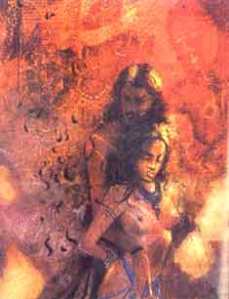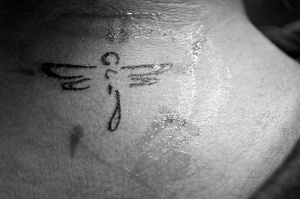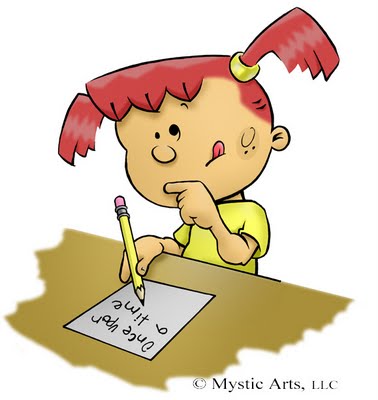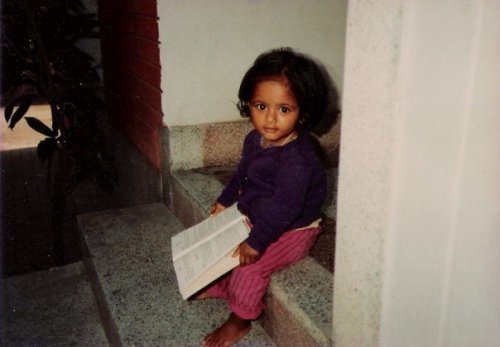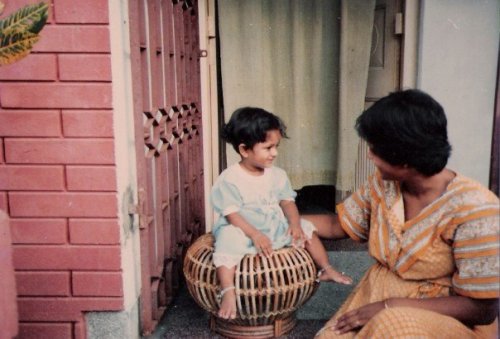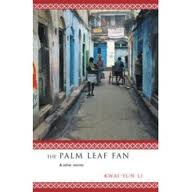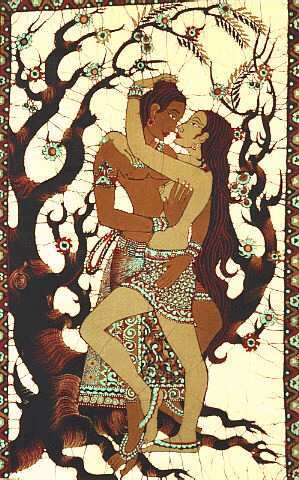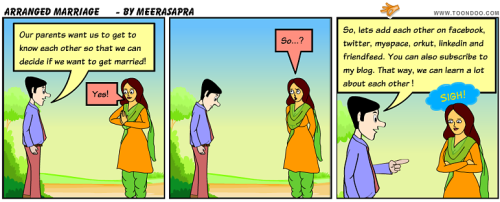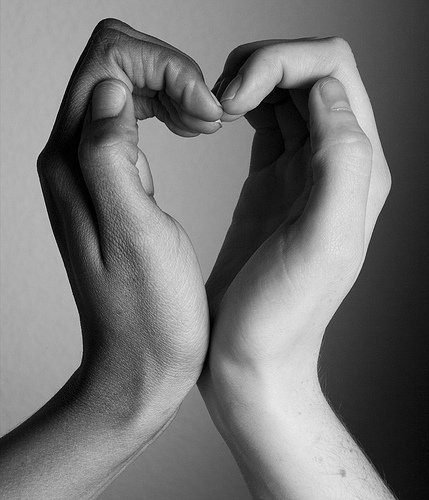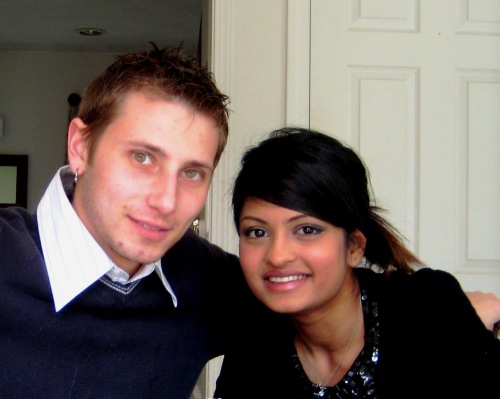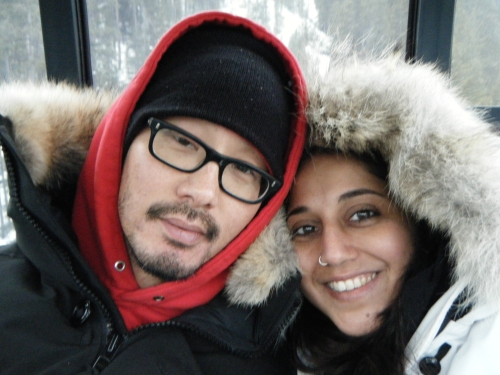
Ride the Rocket, Nuit Blanche 2011, Toronto
An edited version was published by South Asian Generation Next on 6th October 2011 (print version).
This year was a cold Nuit Blanche. If you think about it, it almost sounds morbidly romantic. The Cold White Night. You know, the whole shindig about the blank canvas painted with the creativity of art. Yes, that. Except, it was très cold.
So, another year. Another Nuit Blanche. My fourth year. I was excited. Honest. It was the first Saturday since I had handed in my M.A. thesis. My mind was devoid of academia and free to take in the sights and sounds of the novel art fest that I look forward to each year. Last year was disappointing, no doubt. But this year took the cake… in disappointment.
My night started late. I joined a couple of people (friends and friends-of-friends) at around 9:30 on October 1st in Zone A, at Bloor and Yonge. After trying to figure out the map for a while, we ended up walking west on Bloor. The night was young. So were we. Spirits were high (literally, since some of us were surreptitiously drinking). Conversation was flowing. Kind of. And then, bang, at the corner of Bloor and Bellair Street, we were stopped in our tracks by the sight of couples dancing to classical music.

Dancing Couples (unoffical exhibit), Nuit Blanche 2011, Toronto
“Wait, guys,” I said. “This must be an exhibit.”
One of the guys sniggered. I wanted to smack him (as I will for most of the night, but that comes later).
After two minutes of checking them out, we walked on (later, I pored over the list of exhibits to locate what/who they were. Finally, I must conclude that they were an unofficial exhibit.).
Next we ended up at Avenue and Bloor, and entered Church of the Redeemer that hosts an exhibit without fail each year. We were greeted by a smiling old lady who went “welcome”. And then, we were face-to-face with static-y televisions. “This is art?” the same annoying guy started again. “Open your mind,” I said, tersely. The church atmosphere was awe-inspiring. You have to admit that there is something about a holy place that demands reverence. And, silence. But some giggling teenage guys (perhaps, drunk, too) kept yelling out obscenities. The tiny candles, however, along with the choral music, kept the ethereal atmosphere of Compostela alive.
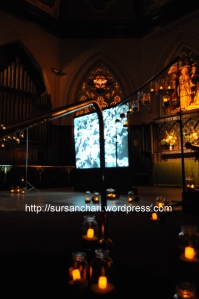
Compostela, Nuit Blanche 2011, Toronto
We moved on, and out into the cold. Where to now? We wondered. “Can we go to the ROM (Royal Ontario Museum)?” one of them asked. “No baby, they are not open today.”
“Actually, they might be,” I ventured. “They had an exhibit last year too.”
We wandered upto the ROM, only to be greeted by milling people, but no sign of any exhibits. There were no welcome Scotiabank info tents to help us either. Wow, we must really be in the midst of a recession, I thought. As we were walking away, I saw people heading out of the side entrance of the ROM. Then, I noticed pictures of Bollywood flicks plastered on the side, announcing the Bollywood Cinema Showcards exhibit. “Guys, they are open!” I yelled, happy as a clam. For those who are not in the know, this exhibit had made its appearance at AGO (Art Gallery of Ontario) a while back, and now it was being recycled for Nuit Blanche. The reason for my happiness was that I had missed it earlier (read: working on my thesis), but now I got to catch it. For free!
The exhibit had us climbing three flights of stairs. “They must really want to discourage us from catching this!” I said out aloud. The exhibit, however, was every bit worth it. It was interesting to watch non-brown people reading out the names on the hand painted showcards, and not getting what they meant. There was one that cracked me up. Ek Sapera, Ek Lutera. One Snake Charmer, One Robber. It had a figure of a very lust ridden Feroz Khan gazing equally lustfully at a helpless half-naked wide-eyed damsel, while in the process of robbing her honour. And there was a snake charmer too in the corner, but it was unclear what his role was. I surmise she falls in love with the snake charmer, who saves her from the Lutera. Oh, well.
Our steps took us to a Niagara Falls exhibit next. Slow Falls Rising, located on the University of Toronto campus, was a video installation of Niagara Falls rising upwards. In slow motion. Don’t look surprised. Yes, that’s all it was. “Je-sus, if this is art, I am entering something next year!” one of my friends called out. “Hey, look at me! I am walking backwards in slow motion!”

Slow Falls Rising, Nuit Blanche 2011, Toronto
We sniggered and tee-heed and went to look for something meaningful in this melancholic night of disillusionment.
We ended up in the middle of Queen’s Park and spied a large exhibit in the distance. We walked, without inspiration. And then, we were silenced. Because The Feast of Trimalchio did just that. Subliminally sexual, the images created tension (all kinds of tension, if I may add). We were silenced, as were most of the crowd. Most of them were open-mouthed and unable to walk away. Reminding myself that the night wouldn’t last forever, and there were many, many more exhibits to catch, I reluctantly moved away. The annoying guy, however, put a damper, as usual, “My evaluation: this sucks”. I had to retort to shut the prick up, “My evaluation: you have no imagination” (He ignored me for the rest of the evening. Not that I care.). We lost him and his friend momentarily in their quest for washrooms (thank god!) and headed to Hart House. There were atleast four exhibits there.

The Feast of Trimalchio, Nuit Blanche 2011, Toronto
The first three inside the building are nothing to write home about (and I won’t even bother). But the one in the courtyard should be applauded for its innovation. Known as Medicine Walk, and organized by the Aboriginal Studies Program at UofT, it was a group exhibition on (quoting from the Nuit Blanche booklet) “aboriginal knowledge, artistry and language”. I made out a beehive made of wood and big enough to accommodate atleast 10-12 adults in it. There was this one guy handing out a drink of some sort. I refused, well, because I had my own drink. There were also rows of pod-like capsules that were filled with crickets. A man at the exhibit explained how crickets needed a certain amount of warmth to stay active (the pods had some kind of heating), and they went into hibernation once they lost that warmth.
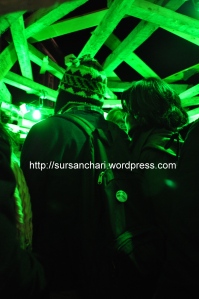
Wooden beehive (part of Medicine Walk), Nuit Blanche 2011, Toronto
After having exhausted Hart House, we walked to meet up with the annoying guy and his friend, and went to catch a train from Queen’s Park. Meanwhile, I was informed in hushed whispers that the annoying guy had decided to head home (again, thank god!). The train took us to St. Patrick, and hence, to Zone B.
The first thing we saw was Ride the Rocket, a multimedia video installation that transformed a street car into a virtual ride through video. It appeared to be a popular exhibit, judging from the long line, so we moved on, after taking pictures for posterity.
Next, we walked into The Heart Machine. Termed as an “interactive fire sculpture” in the booklet, the exhibit was too crowded to get a clear glimpse. However, I think the heat from the sculpture may have something to do with that. Cold night. Hot sculpture. Freezing people. You make the equation. I did catch some shooting flames in the air, but it wasn’t enough to keep me around.

Egerton Falls, Nuit Blanche 2011, Toronto
Our next stop took us to Dundas Square, again too crowded to move about in. We headed towards Ryerson University, and stumbled upon Egerton Falls. The fog, music and the lights around the water had me transfixed for a few moments. But the increasing cold (and a desire to empty my bladder) pushed us along. Looking for a restroom, we ended up at Atrium on Bay. After my business, we headed to the underground parking to catch a sound installation known as Border Sounds. The novelty of the exhibit was that it was in an underground parking. The exhibit had different makeshift stations with tons of headphones at each station. Each station played music that referred to a particular area. I caught Israel, Pakistan, India and finally, Canada. And, if you like dubstep, then this was probably your scene.
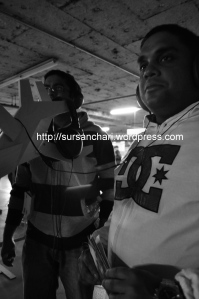
Border Sounds, Nuit Blanche 2011, Toronto
Later, we caught Paparazzi Bots on Yonge Street. The bots moved around and took your photos and then displayed them on a screen. Brownie points for another inventive project. After this, we stumbled upon Shannon’s Fireflies that had strings of LED lights that react to people’s whispers and convert them into light. Sure, it was “pretty,” but it was also similar to Ning Ning on Bond Street last year. Another case of recycled art? Bah. (Apparently not. Check comments section below.)

Paparazzi Bots, Nuit Blanche 2011, Toronto
We meandered into Zone C, after I filled my belly with some yum yum from one of the food stations in front of Nathan Phillips Square. No, I didn’t see the flying human birds at the Square. Maybe, I was too tired and cold to care. Also, hungry. Hunger makes me blind. The first exhibit that caught my eyes in Zone C was Cardiac Combustion Chamber. It was a bunch of guys playing drums in the center of car parts suspended into space. The music was mesmerizing, and I wanted to stay. But one of my companions (and, my ride back home) was cold and wanted to leave. It was probably minus 1 at this point, and I wanted to catch Bone Dump, before we called it quits.

Cardiac Combustion Chamber, Nuit Blanche 2011, Toronto
On our way there, we passed by I just know that something good is going to happen. People were standing in lines to grab an umbrella and experience rain. Yes, rain. In the cold. Don’t ask me why. I don’t know why. Sometimes, people are crazy, or too drunk, to care. We also passed by New Dawn Fades on 100 Yonge Street. It was a row of cyclical rings lit by blue lights. There was a line to get in. Again, I don’t know why. It didn’t look very interesting from outside. Not in my opinion, anyway.

I just know that something good is going to happen, Nuit Blanche 2011, Toronto
And finally, we came upon Bone Dump in the Financial District, in an alley between 10 and 18 King Street. It was a dump of porcelain bones. At this point, my friend gave me a look that said, “This is what you made me walk in the cold for? This?” “Oh, come on,” I said, “this is better than most of the crap we saw tonight.”

Bone Dump, Nuit Blanche 2011, Toronto
“True,” he nodded. And, we headed back home.
(Interesting stuff seen that night that was not a part of Nuit Blanche: a man in a green skin-tight suit, two guys vomiting together and a man in Snuggies.)

Man in the green skin-tight suit, Nuit Blanche 2011, Toronto

Two vomiting guys, Nuit Blanche 2011, Toronto

Man in Snuggies, Nuit Blanche 2011, Toronto
At two-thirty, when we left, downtown was pretty crowded. This was new. People were genuinely out to enjoy the fest, despite the insipid “art”. But hey, that is a good sign. For artists. For the city. And, to an extent, for the economy. Smile, Rob Ford.
Photographs: Copyright Sanchari Sur (if it wasn’t obvious, already).

Crickets in pods (part of Medicine Walk), Nuit Blanche 2011, Toronto

Shannon's Fireflies, Nuit Blanche 2011, Toronto
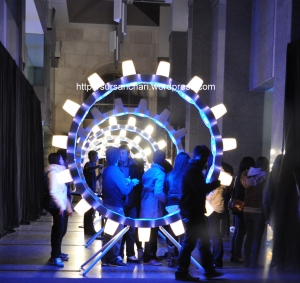
New Dawn Fades, Nuit Blanche 2011, Toronto

